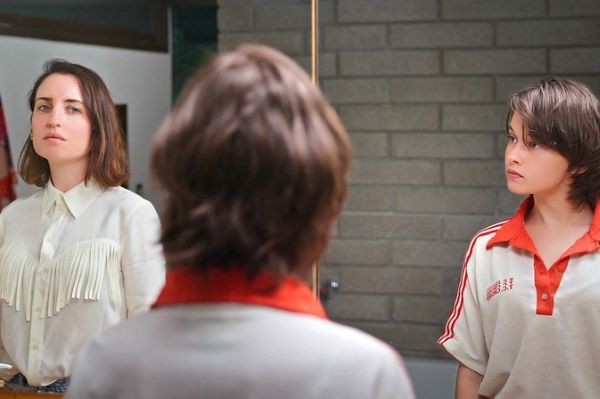Here at the Wee Review, we’re currently huffing the fumes of the first cultural responses to the COVID pandemic. It clearly wasn’t going to take long for the virus to emerge in vague disguises, like Superman in Clark Kent specs. So far at Sundance, we’ve come across Ben Wheatley’s lysergic horror In the Earth, quarantine romance The Pink Cloud (a project in all fairness that was conceived in 2017), and breezy end of the world comedy, How It Ends. Honestly, we can’t wait for all the Coronavirus comedy hours once the Fringe lurches back into functionality. Back to the celluloid world though, How It Ends is a whimsical comedy that imagines the Apocalypse not as a terrifying eschatological crisis, but the best possible reason to resolve old slights, learn to love yourself, eat an entire gateau if you want, and trip balls to your heart’s content.
As the world waits for its abrupt introduction to a large asteroid that night, 30-something Liza (Lister-Jones) is getting ready for a party with a pleasantly chatty teenage girl (Cailee Spaeny). This girl turns out to be Liza’s ‘YS’, or Younger Self. The two have planned to stop along the way to say their piece and make their peace with various people. This goes wrong almost instantly as Liza’s car turns out to have been stolen. This necessitates a walk through the eerily quiet streets, meeting various family, friends, and oddballs as they go.
Falling somewhere between a whimsical stroll and picaresque plod depending on the relative success of each scene, it’s clear How It Ends has been moulded on the hoof from whichever of their showbiz pals were available. Lister-Jones’ Life in Pieces co-stars Angelique Cabral and Colin Hanks appear in brief cameos, New Girl‘s Lamorne Morris is a philandering ex (the most purely amusing scene), and musician Sharon Van Etten is found wistfully strumming a guitar in the middle of the road. She persuades the two Lizas to join her in a duet she had written with a dead friend in mind. This is symptomatic of the piecemeal makeup of the film. It’s very sweet, but feels like a shot of real emotion in a movie that otherwise chugs along on (socially) distanced irony.
Cropping up elsewhere are real-life husband and wife Charlie Day and Mary Elizabeth Ellis, Day’s It’s Always Sunny in Philadelphia co-star Glenn Howerton, Logan Marshall-Green as Liza’s one-that-got-away, Olivia Wilde as an estranged best friend who claims she can see Liza’s afterlife (“One word… Chalamet!”), Helen Hunt as her mother, and Bradley Whitford as her father. The scene with Whitford offers perhaps the film’s most subtly powerful moment. How It Ends establishes early on that due to the heightened states in which people are operating on their final day, they can see each other’s YS’s. At the end of their conversation, Liza’s dad fails to recognise her younger version. It hints at deeper undercurrents that the film otherwise never bothers to stir.
How successful How It Ends ultimately is depends on being able to get onboard with its inherent self-indulgence and slightness. If whimsical indie meandering isn’t your thing, then the naval-gazing merely compounds it (although… you know, it’s Sundance!). And while the deserted streets, beautifully-shot, are a suitably eerie location, it’s asking a lot to believe that these busy neighbourhoods wouldn’t be awash with people going absolutely nuts. It would more likely resemble the end of The Purge than the beginning of 28 Days Later. Still, Lister-Jones and Spaeny are great company, their real-life friendship transferred easily to screen, and there is enough early-Linklater atmosphere to keeps things interesting. It tries perhaps too hard to hit a constant groove of cheerful nihilism, but it’s sweet, frequently amusing, and always self-aware.
Screened as part of Sundance Film Festival 2021
